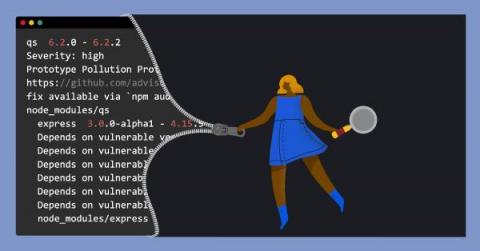Operations | Monitoring | ITSM | DevOps | Cloud
NodeJS
Top Tips for NodeJS and Debugging on AWS Lambda (Part 2)
This is the second post in a 2 part blog series on debugging, monitoring and tracing NodeJS Lambda applications. If you haven’t yet seen part 1, check it out here (it’s a great read!) Now let’s get back into our post with one of the most commonly experienced issues when it comes to Lambda functions, Cold Starts.
Top Tips for NodeJS Tracing and Debugging on AWS Lambda (Part 1)
In this two post series, we are going to explore some ways to trace and debug NodeJS Lambda applications. Delving into some methods to look further into resources utilized to and some methods to optimize code. AWS Lambda, an event-driven compute service first introduced roughly eight years ago, changed how we build out cloud applications as an industry.
9 Ways to Improve Node.js Performance
Node.js is the most popular tool for developing server applications in JavaScript, the world's most widely used programming language. Node.js is now regarded as a critical tool for all types of microservices-based development and delivery, as it has the capabilities of both a web server and an application server. In any web application, performance is critical. Faster performance in any web application improves the user experience and leads to increased revenue, which makes business owners pleased.
Node.js Performance Testing and Tuning: Step by Step Approach
Node.js is well-known for its lightning-fast performance. However, as with any programming language, you might develop Node.js code that performs poorly for your users. Appropriate performance testing is required to combat this. Node.js can be used for a variety of tasks, including scripting to do tasks, running a web server, and serving static files, such as a website. Today, we'll go over the procedures to test a Node.js HTTP web API.
How to audit Node.js modules
Node.js is one of the best and most widely used Javascript runtimes used for building APIs. But, this popularity status has led to many hackers distributing insecure modules that exploit the Node.js application or provide a weak point for exploitation. In this tutorial, you will learn how to audit Node.js modules and also detect vulnerabilities in modules using npm audit.
MEVN stack tutorial | Build a CRUD app using Vue 3, Node, Express & MongoDB
Adding Redis & MySQL to AppSignal for Node.js with OpenTelemetry
We've simultaneously launched 4 new integrations for Node.js: Redis, ioredis, MySQL, and MySQL2. This means that you can now see all the details of a query in the Event Timeline and Slow Query screens in AppSignal. Because we are a small and bootstrapped team, we've chosen to embrace OpenTelemetry as a means of expanding AppSignal's offering in the Node.js ecosystem.
Best practices to collect, customize and centralize Node.js logs
How to use VSCode to debug a Node.js application
Debugging is an essential step in software development, as it allows developers to fix errors before releasing the software to the public. Debugging tools can be integrated into code editors, making the debugging process more efficient. This tutorial will show you how to debug node.js in Visual Studio Code.











